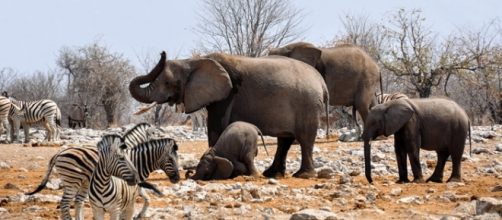In an astounding interview with radio Voices of the People, Patrick Ngoma, the Zambian Minister of Tourism claimed that the Zambian nationals are the main poaching culprits in Zimbabwe as “poaching by our people is controlled.” He went on to state that these controls were so effective that poachers are now unable to penetrate Zambian national parks.
His statement that poachers from Zambia find the picking easier in Zimbabwe due to better law enforcement in Zambia was challenged in the interview. Zambian wildlife is at a low ebb, and it is more likely the poachers are crossing into Zimbabwe as that country has better protected their wildlife.
Zambia has been slow to protect wildlife
Crispin, an ex-police officer in the Chirundu area of northern Zimbabwe, confirmed that he had seen the Zambians killing animals across the Zambezi River in the late 1980’s and nobody stopped them. “The Zambians are now more serious about poaching, but they are trying to close the door only now and this is why it is harder to find wild animals to kill in the southerno Zambian districts,” he said. Crispin now volunteers as a Police reservist and he confirmed nearly every time there is a shooting contact with poachers, they turn out to be from Zambia.
The very porous Lake Kariba and Zambezi River, which has been a smuggling and poaching route for many years allows the Zambians to cross into Zimbabwe easily.
Many of them are recruited in Lusaka by Chinese nationals who buy ivory from the poachers and export it to China. Ken, who lived in Sinamwenda, a remote fishing area of Kariba confirmed the Zambians would cross into the Sengwa basin on fishing boats to hunt rhinos in the 1990's as there were no animalsleft on the opposite shore near the Chipepo settlement.
Most elephant poachers in Zimbabwe are Zambians
Ngoma admitted that Zambian nationals are now the main culprits poaching in the Victoria Falls, Hwange National Park and the eastern Zambezi reaches, and he did state that this is a sad state of affairs. It is becoming “a humiliation” for Zambia. Zambian media is critical of Zimbabwe’s shoot to kill policy and are becoming angered by the deaths of their own people.
However, it is time for Zambia to address the problem of their nationals thieving from Zimbabwe’s wildlife heritage. Cross-border co-operation between authorities is essential to combat the rampant poaching in Zimbabwe.
Cross-border co-operation essential
In mitigation, Ngoma did go on to elaborate that Zambia is trying to do something about the problems of poaching into neighbouring countries. To “solve poaching cases,” he said, it is important to form a joint operation between “SADC countries.” In particular, he spotlighted a proposed joint operation in the Kavango Zambezi Transfrontier Conservation Area (KAZA). The use of drones and cross-border communication could be the answer to the poaching problems he feels.
Zambia is using drones in anti-poaching operations, and Ngoma said the long term plan is to have many more of them patrolling the poaching route hotspots. The Thin Green Line Foundation has already participated in the funding of drones for use inZambia and Zimbabwe. Drones hold out hopes for better anti-poaching operations, but like any law enforcement tool, it is only as good as the backup reaction teams and the commitment from authorities. Complacency and propaganda will not make the Zambian poaching problem in neighbouring countries go away.

